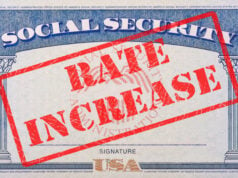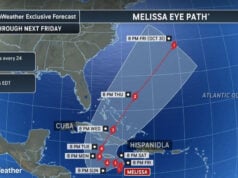
Written by Corrie Pelc — Fact checked by Jill Seladi-Schulman, Ph.D.
Past studies show that a person’s “heart age” is not always the same as their chronological age. For example, health issues such as high blood pressure, type 2 diabetes, and obesity can raise a person’s heart age to be older than their chronological age, putting them at higher risk for cardiovascular disease.
In an effort to help people determine their heart’s biological age, a team of researchers from Northwestern University Feinberg School of Medicine in Chicago has developed a free online tool to calculate their heart age and determine their cardiovascular disease risk.
Additionally, the research team tested the new online tool on thousands of American adults for a study recently published in JAMA Cardiology, and found most adults have a heart that is several years older than their chronological age, sometimes by as much as 10 years.
In the past, heart disease risk has normally been presented as a percentage. This new online tool, researchers say, may provide a “heart age” calculation that is easier for people to understand.
“We hope this tool helps doctors and patients discuss risk for heart disease more effectively so we can better inform what therapies can prevent heart attacks, stroke, or heart failure events from ever happening,” Sadiya S. Khan, MD, MS, the Magerstadt Professor of Cardiovascular Epidemiology at Northwestern University Feinberg School of Medicine and senior author of this study, says in a press release.
Researchers then tested the calculator on more than 14,000 U.S adults between the ages of 30 to 79, who had participated in the National Health and Nutrition Examination Survey between 2011 and 2020. Study participants did not have a cardiovascular disease diagnosis at the time of the survey.
Upon analysis, researchers found that on average, women had a heart age of 55.4 and a chronological age of 51.3, while men had a heart age of 56.7 and a chronological age of 49.7.
When looking at education as a risk factor, scientists found that about one-third of male participants with a high school or less education had a heart age more than 10 years older than their chronological age.
And when examining ethnic groups, researchers found that both Black men and women had the largest gap between their heart and chronological ages. Black men had an average heart age of about 8.5 years more than their chronological age, while the difference between the ages was 6.2 years for Black women.
Medical News Today had the opportunity to speak with Christina Michael, MD, a cardiologist with Baptist Health Heart & Vascular Care, about this study, who commented that “heart age” is a clear way to communicate heart risk to patients.
“As a cardiologist, part of my job is helping patients understand their risk of heart disease and empowering them to make changes that can prevent serious problems down the road,” Michael explained. “Knowing your heart age is important because if your heart age is higher than your actual age, it’s a significant wake-up call. This helps us identify individuals who stand to gain the most from interventions.”
“When patients truly grasp that their heart is ‘older’ than it should be, it may motivate them to take action. This might mean finally quitting smoking, making healthier food choices, exercising more regularly, or working with their doctor to manage conditions like high cholesterol or high blood pressure.” — Christina Michael, MD
“The more precise we can be in identifying who’s truly at risk, the better we can tailor our prevention strategies,” Michael added. “Each new tool helps us identify individuals who will benefit most from aggressive steps to reduce their chances of experiencing a heart attack or stroke. The goal is to get the right interventions to the right people at the right time.”
Rigved Tadwalkar, MD, FACC, consultative cardiologist and director of Digital Transformation Pacific Heart Institute in Santa Monica, CA, told MNT that this is exactly the kind of tool we’ve been needing to bridge the gap between clinical data and patient understanding.
“Risk percentages can feel abstract,” Tadwalkar explained. “For example, saying someone has an ‘8% risk of a cardiovascular event over 10 years’ doesn’t really land emotionally. But telling someone that their heart is functioning like that of someone 10 or 15 years older resonates much more. It reframes risk in a way that’s personal and immediate, which is of high importance when we’re trying to prompt lifestyle changes or discuss preventive therapies.”
“From a preventive cardiology standpoint, this is valuable because it gives people a mirror that’s calibrated to their health, not just their age,” he continued. “It helps patients grasp that their risk factors, which often accumulate gradually, are already exerting a physiological toll. And once that reality is more tangible, it opens the door to shared decision-making about how to slow or even reverse that trajectory.”
Cheng-Han Chen, MD, a board certified interventional cardiologist and medical director of the Structural Heart Program at MemorialCare Saddleback Medical Center in Laguna Hills, CA, agreed.
“Heart disease remains the leading cause of death in the United States. A tidy measure such as ‘heart age,’ while simplistic, can be a useful tool to frame a discussion around someone’s heart health and future risk. This could then motivate them to take actions — such as improving their lifestyles — that could lower their risk. This tool could potentially even be used to evaluate response to clinical therapeutics and interventions.” — Cheng-Han Chen, MD
“We are still in the early stages of understanding how best to determine a ‘heart age’,” he added. “Much more research is necessary to determine the best measures of such a calculation, and validate its prognostic information.”
Disclaimer
The information contained in South Florida Reporter is for general information purposes only.
The South Florida Reporter assumes no responsibility for errors or omissions in the contents of the Service.
In no event shall the South Florida Reporter be liable for any special, direct, indirect, consequential, or incidental damages or any damages whatsoever, whether in an action of contract, negligence or other tort, arising out of or in connection with the use of the Service or the contents of the Service. The Company reserves the right to make additions, deletions, or modifications to the contents of the Service at any time without prior notice.
The Company does not warrant that the Service is free of viruses or other harmful components
This article originally appeared here and was republished with permission.












